Hi, guys. I have been reading DIYaudio for many years and received a lot of useful information and inspiration. For the first time, I decided to write. Sorry for the possible mistakes, my English is not always good.
I want to present my system. It's still in progress, but it's already bringing me a lot of fun and music.

Speakes inspired by Reflector audio. I call them TIE Brute, they look like heavy starfighter from Starwars 🙂 All information about the drivers is shown in the picture. As you might guess, an open-baffle + driver in CD horn.
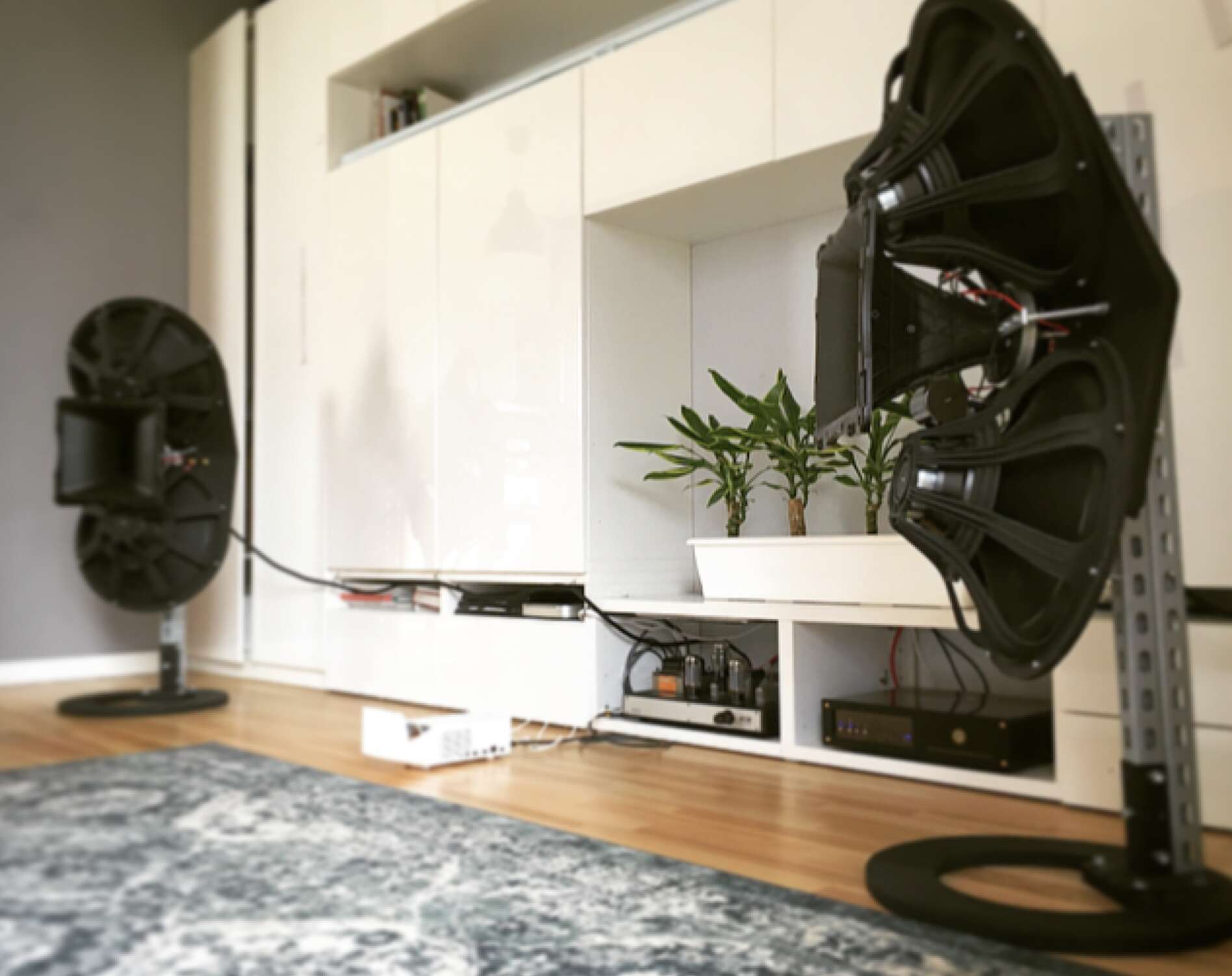
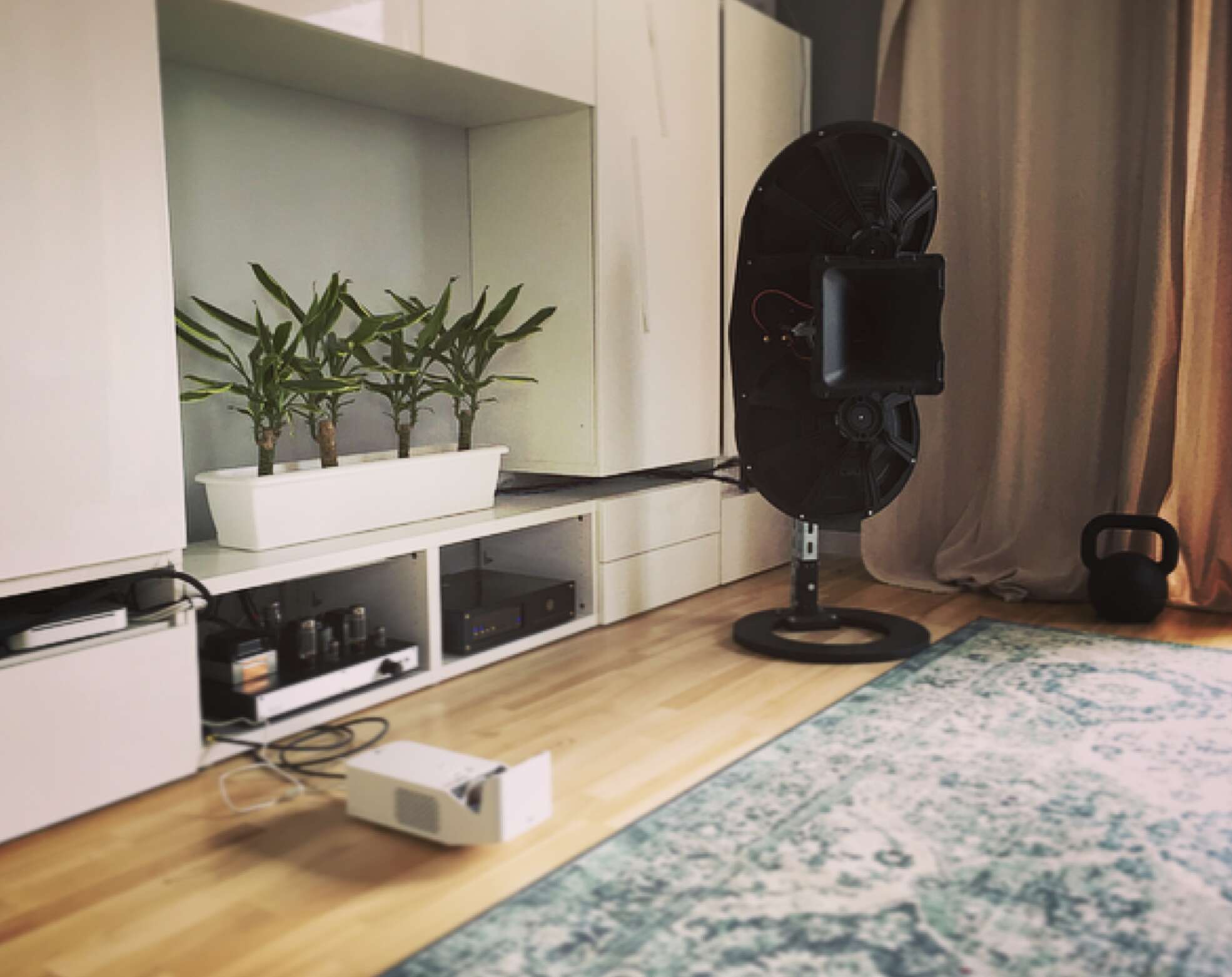
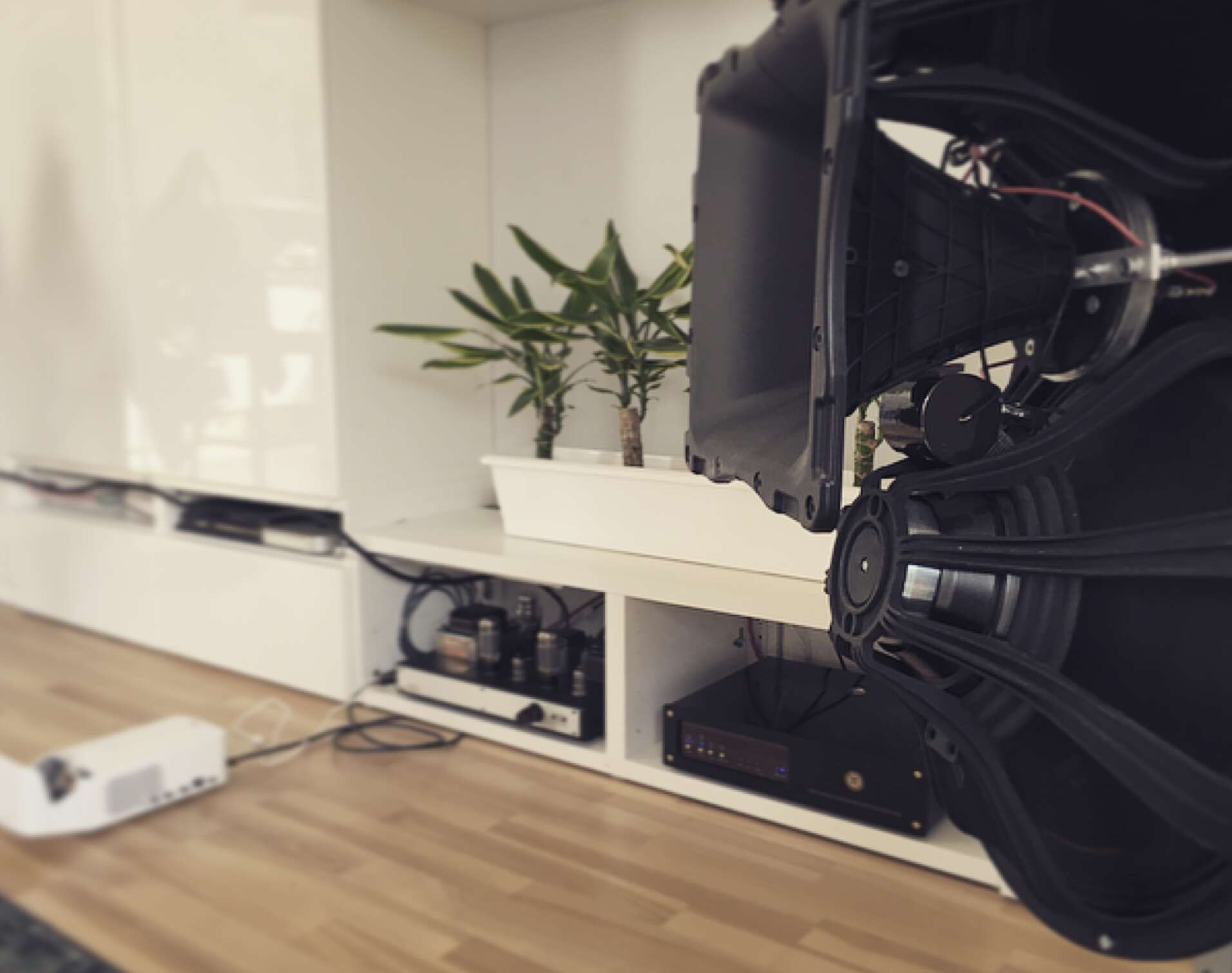
After a long period of experiments, I came up with an extremely simple crossover. In short: the Faitals are filtered acoustically by turning out, the compression driver with a 4.7 capacitor gives a shelf response, and then I use digital or analog equalization to the desired frequency response.
This may look not-so-smart and too funky-punky, but it works surprisingly well!
(I didn't save any good measurements, only such shitty ones with all sorts of reflections, in reality, there is no failure at 500 Hz, mic position. But hope, the idea will be clear, and if it is necessary, I can make normal measurements. Funky-punky as I say))).


At low end 2x 10-inch subwoofers with the added servo (piezo sensor on the driver and feedback board in front of the amplifier). They can not be heard until you turn them off 🙂
And a small video presentation on the phone, of course, the live sound is better, it's just for fun:
Demo - YouTube
I want to present my system. It's still in progress, but it's already bringing me a lot of fun and music.

Speakes inspired by Reflector audio. I call them TIE Brute, they look like heavy starfighter from Starwars 🙂 All information about the drivers is shown in the picture. As you might guess, an open-baffle + driver in CD horn.



After a long period of experiments, I came up with an extremely simple crossover. In short: the Faitals are filtered acoustically by turning out, the compression driver with a 4.7 capacitor gives a shelf response, and then I use digital or analog equalization to the desired frequency response.
This may look not-so-smart and too funky-punky, but it works surprisingly well!
(I didn't save any good measurements, only such shitty ones with all sorts of reflections, in reality, there is no failure at 500 Hz, mic position. But hope, the idea will be clear, and if it is necessary, I can make normal measurements. Funky-punky as I say))).


At low end 2x 10-inch subwoofers with the added servo (piezo sensor on the driver and feedback board in front of the amplifier). They can not be heard until you turn them off 🙂
And a small video presentation on the phone, of course, the live sound is better, it's just for fun:
Demo - YouTube
Last edited:
A few words about drivers choice.
RCF 940/950 was my first midrange/treble CD. A few years ago, I thought it was a huge horn! It seems reasonably compact now. 🙂
I love this combo, both the technical specs and the sound. Listened to different horns in this format (XT1464, XR1464, RCF950+HF1440, SEOS etc), they all have pros and cons, I don't want to change the current combo due to the set of properties.
Home measurements are very similar to those published in audioxpress. And you only need 1 capacitor to get a flat shelf 800-18k, fun!

The only mode is the papier-mache damping of the titanium membrane. In my opinion, it worth it, HF became cleaner and softer, but maybe it's imagination. 🙂) On the measurements, I found no significant evidence of benefits. But the ears like it.

In the first version of this project I used a 12-inch driver from Beima.
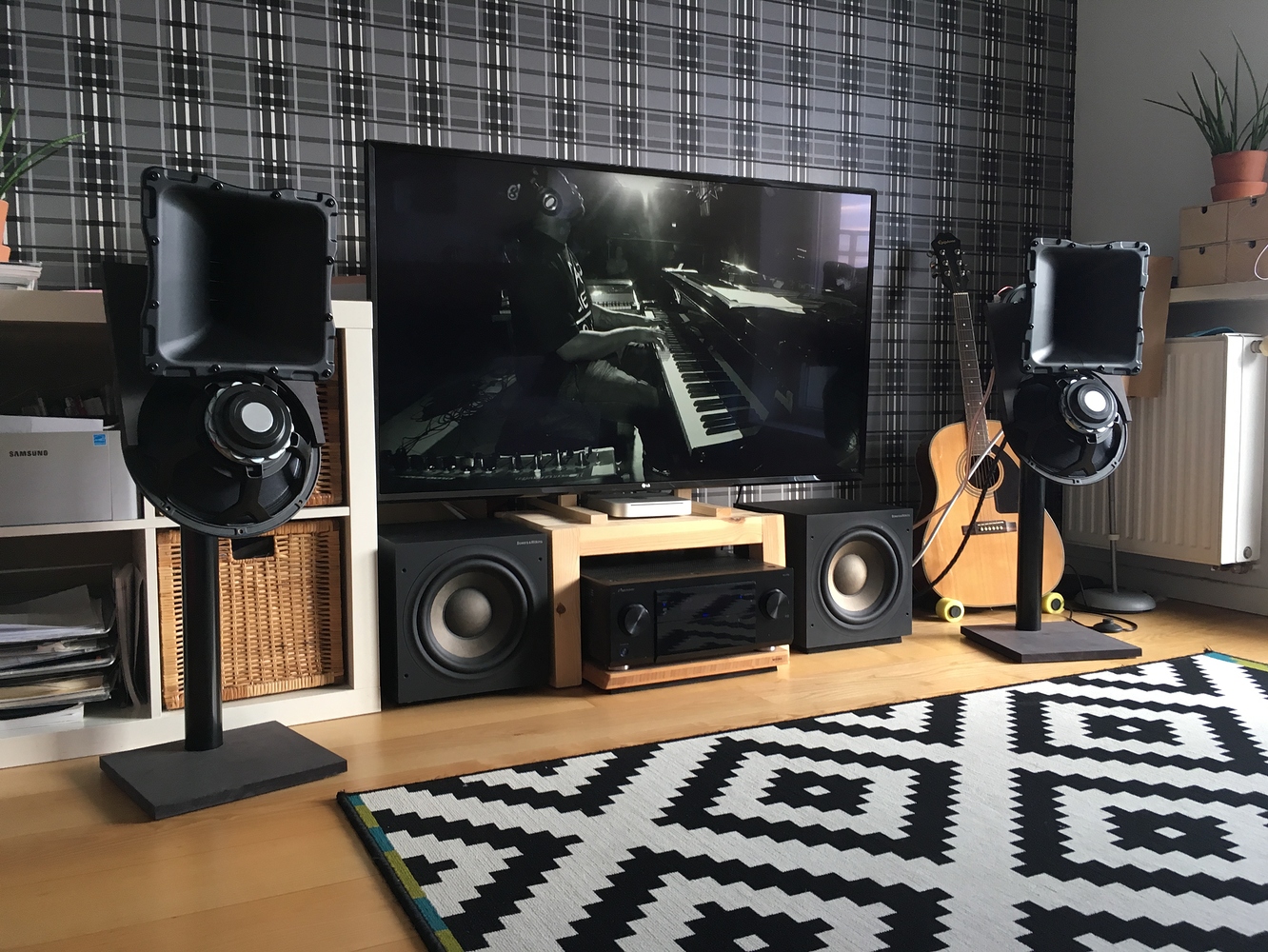
They're great, but in OB it's a little difficult to reach 90-100 Hz, and my subwoofers are not very good above 80. I wanted to try something bigger. Something like that:

The choice was made, and I'm not disappointed. Great drivers!
The result is actually a point source 40 Hz - 18 kHz with good off-axis/power response (according to my measurements in the apartment). I've never had a better-sounding system!
RCF 940/950 was my first midrange/treble CD. A few years ago, I thought it was a huge horn! It seems reasonably compact now. 🙂
I love this combo, both the technical specs and the sound. Listened to different horns in this format (XT1464, XR1464, RCF950+HF1440, SEOS etc), they all have pros and cons, I don't want to change the current combo due to the set of properties.
Home measurements are very similar to those published in audioxpress. And you only need 1 capacitor to get a flat shelf 800-18k, fun!

The only mode is the papier-mache damping of the titanium membrane. In my opinion, it worth it, HF became cleaner and softer, but maybe it's imagination. 🙂) On the measurements, I found no significant evidence of benefits. But the ears like it.

In the first version of this project I used a 12-inch driver from Beima.

They're great, but in OB it's a little difficult to reach 90-100 Hz, and my subwoofers are not very good above 80. I wanted to try something bigger. Something like that:

The choice was made, and I'm not disappointed. Great drivers!
The result is actually a point source 40 Hz - 18 kHz with good off-axis/power response (according to my measurements in the apartment). I've never had a better-sounding system!
Very cool. I've experimented with similar setups.
Hard to beat if there's enough spl for your needs.
Hard to beat if there's enough spl for your needs.
European apartments dictate SPL limits.. I respect the neighbors and I don't like police 😀 so the headroom is enough for me. Even 10W tube SE is quite enough. However, 4x18 + subwoofers leave some horsepowers, just need an amplifier with more muscles 🙂
Last edited:
Interesting project. Wish I could hear them!
Very cool. I've experimented with similar setups.
Hard to beat if there's enough spl for your needs.
Sorry, guys, responding to your comments, but something went wrong and the quote didn't attach. Thank you for your attention to the topic!
Your posts needed approval, and it's been a very busy morning. All should be well now. 😉
Thank you, accepted! I previously only read the forum, I"ll adapt! 🙂
That paper mache coating is interesting as well.
I coated a 1.75" titanium diaphragm with Elmer's all purpose glue. Like you, I didn't see a huge difference in the measurements but it certainly sounded less metallic.
Might try it on Radian 3" aluminum.
I coated a 1.75" titanium diaphragm with Elmer's all purpose glue. Like you, I didn't see a huge difference in the measurements but it certainly sounded less metallic.
Might try it on Radian 3" aluminum.
That paper mache coating is interesting as well.
I coated a 1.75" titanium diaphragm with Elmer's all purpose glue. Like you, I didn't see a huge difference in the measurements but it certainly sounded less metallic.
Might try it on Radian 3" aluminum.
I read everything I found on membrane coating, aquaplas is most often mentioned, but I thought it was a risk to damage the membranes. My logic was to add some coating with a damping property, and the paper looks like an interesting option. Papier-mache is not difficult to prepare and can be removed from the membrane by water, you can add a certain amount of glue to it.
I added 1 g of paper (after the water dried), there were small changes on the waterfall, but I'm not sure if I really saw the result. But I think I can hear it.
Perhaps one day I will buy a set of membranes and do another series of experiments, but so far I like the result, I'm just enjoying it.
It seems I would have to pull the trigger of the spending gun. RCF ND950 have been on my wish list for a while. Joseph Crowe made tests with reticulated foam on backside of the dome with measured result...
Modifying a Compression Driver - YouTube
Modifying a Compression Driver - YouTube
It seems I would have to pull the trigger of the spending gun. RCF ND950 have been on my wish list for a while. Joseph Crowe made tests with reticulated foam on backside of the dome with measured result...
Modifying a Compression Driver - YouTube
I'm happy with the 4 " RCF. Perhaps the only "minus" is the slightly dirty upper octave, which is audible in comparison with ribbon tweeter, for example. But everything has pros/cons, the pros outweigh for me, tweeter was sold 🙂
I saw Joseph Crowe tests, great content. But I couldn't repeat the result. Perhaps more R&D is needed. Whatever, RCF sounds great from box!
My friend has an RCF 950/950 combo, and a new driver from Faital HF1440, I listened to both. Faital sounds a little closer to silk tweeters, according to my impressions. But I didn't think about buying it, RCF stay at home 🙂 it's a matter of taste.
Thanks for a balanced opinion, it's rare here! I have listened to the ND950 in the top models of active RCF monitors. Midrange is really good...
Traditional logic: equalize the dipole, set the horn level by L-pad, set up a crossover.
Funky-punky logic: try to match as is, and equalize the result. I'm not saying it's the right way, or the best way, but it's simple and works great!
The cherry on the cake. You can do this in the digital domain, or add a simple passive equalizer at the line level! Example: in-line R-RC circuit between the DAC and the amplifier:
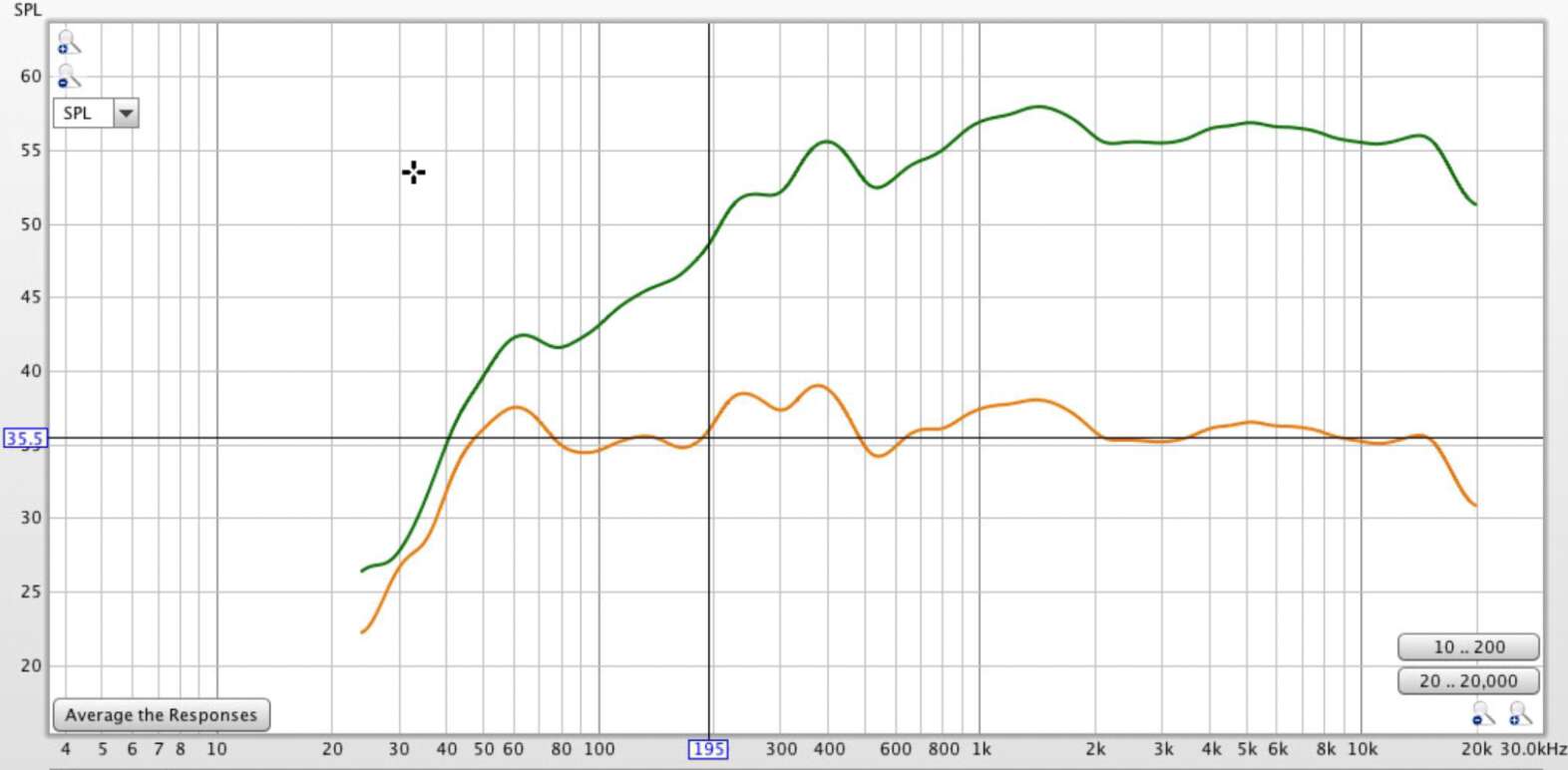
I tried many options: fully digital IIR and FIR, biamp, passive parallel and serial. Now I am completely satisfied with this stuff. For beginners, this is a great option: don't worry too much, make sure you don't damage anything and... equalize it! (one more time: it's not perfect, but it's simple and it works! a lot of commercial stuff requires equalization, IMHO we can cut corners too. Ready for critics))
Funky-punky logic: try to match as is, and equalize the result. I'm not saying it's the right way, or the best way, but it's simple and works great!
The cherry on the cake. You can do this in the digital domain, or add a simple passive equalizer at the line level! Example: in-line R-RC circuit between the DAC and the amplifier:

I tried many options: fully digital IIR and FIR, biamp, passive parallel and serial. Now I am completely satisfied with this stuff. For beginners, this is a great option: don't worry too much, make sure you don't damage anything and... equalize it! (one more time: it's not perfect, but it's simple and it works! a lot of commercial stuff requires equalization, IMHO we can cut corners too. Ready for critics))
Last edited:
No need to be a critic, it's true enough 😉. It does wander into the next level which looks at what can and what can't be equalised, and why.(one more time: it's not perfect, but it's simple and it works! a lot of commercial stuff requires equalization, IMHO we can cut corners too. Ready for critics))
No need to be a critic, it's true enough 😉. It does wander into the next level which looks at what can and what can't be equalised, and why.
I totally agree. Fortunately, there is a lot of information on DIYaudio on this topics 🙂 And good CD horn, dipoles (for example) can do some work for you.
looks like a cool project ,
which horns are you using now ? where do you crossover ?
i would also be very curious to see how you mounted the 15" drivers , and then the horn in between . i would love to see more pictures .
i wanted to try something similar inspired by Reflector Audio but have a hard time imagining how to mount the drivers .
how do you determine the angle of the two 15" ?
regards
which horns are you using now ? where do you crossover ?
i would also be very curious to see how you mounted the 15" drivers , and then the horn in between . i would love to see more pictures .
i wanted to try something similar inspired by Reflector Audio but have a hard time imagining how to mount the drivers .
how do you determine the angle of the two 15" ?
regards
looks like a cool project ,
which horns are you using now ? where do you crossover ?
i would also be very curious to see how you mounted the 15" drivers , and then the horn in between . i would love to see more pictures .
i wanted to try something similar inspired by Reflector Audio but have a hard time imagining how to mount the drivers .
how do you determine the angle of the two 15" ?
regards
In the first message you will find diagram, all parts are signed there, RCF combo and 18'' Faital woofers 🙂 The crossover shortly described in #1 and #16 posts. If I make better measurements and photos of the driver mounting, I will add them later.
I chose the angle between the drivers randomly, it was a rough design, done in a couple of days. Nothing is more permanent than temporary solutions. 🙂

- Home
- Loudspeakers
- Multi-Way
- TIE Brute: open-baffle / horn speakers